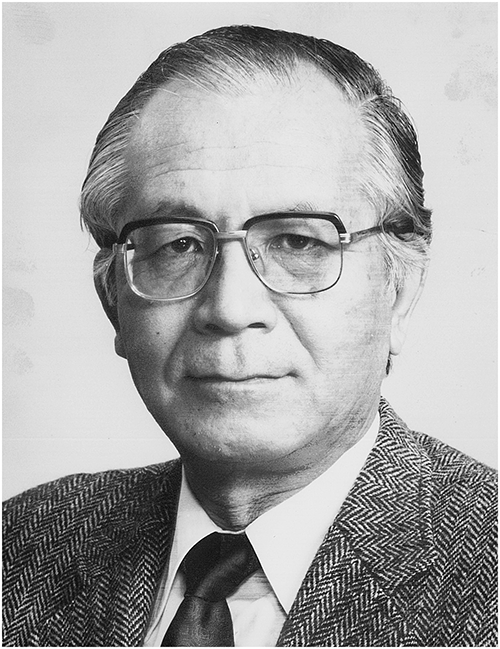2017 Volume 42 Issue 4 Pages 177-178
2017 Volume 42 Issue 4 Pages 177-178

Toshio Fujita, the sixth president and honorary member of the Pesticide Science Society of Japan (PSSJ), died of pneumonia on August 22, 2017, at the age of 88.
Prof. Fujita graduated from College of Agriculture, Kyoto University in 1951, and immediately started his academic carrier as an assistant professor in the Department of Agricultural Chemistry at the same institution. His research topic at that time was the chemistry of plant hormone auxins, focusing on their structure–activity relationships, and provided the basis for his life’s work. A major turning point in his career was provided by his postdoctoral research at Pomona College from 1961 to 1963. His collaboration with Prof. Corwin Hansch resulted in the publication of seminal papers on the establishment of quantitative analysis of structure–activity relationships of biologically active compounds (quantitative structure–activity relationship, QSAR).1,2) After his promotion to associate professor of the Pesticide Chemistry Lab of Department of Agricultural Chemistry at Kyoto University in 1965, he expanded his research activities to include quantitative analysis of the structure–activity relationships of a number of various agrochemicals using physicochemical parameters related to free energy. In 1981, he succeeded Prof. Nakajima as the professor of the Pesticide Chemistry Laboratory, which was renamed the Bioregulation Chemistry Laboratory, and further expanded his work to include QSAR and molecular design of a broader range of biologically active compounds, including pharmaceuticals. Prof. Fujita retired in 1992, and was awarded the title of Professor Emeritus of Kyoto University.
As mentioned above, along with Prof. Hansch, Prof. Fujita was one of the co-founders of QSAR analysis, which is referred to today as the “Hansch–Fujita Method.” This technique is an extrathermodynamic approach aimed at accounting for the biological activities of chemical compounds in terms of their physicochemical properties.3) Of particular significance is the finding that the hydrophobicity of a compound has a significant effect on its biological activity. The proposal that log P (and π derived therefrom, as a substituent parameter) can be used as a useful physicochemical parameter in quantitative analysis has now gained universal acceptance.4) Through a number of examples, Prof. Hansch and Prof. Fujita successfully demonstrated that the biological responses of a series of compounds could be expressed as a linear free-energy relationship, based on the combination of their electronic, hydrophobic and steric effects. Two monumental papers published in Journal of American Chemical Society, entitled “ρ−σ−π analysis.3) Method for correlation of biological activity and chemical structure” and “New substituent constant π, derived from partition coefficients,”4) have been cited 2124 and 1674 times, respectively, to date (as of September 28, 2017, according to Web of Science).
After retiring from Kyoto University in March 1992, Prof. Fujita continued his life’s work on QSAR, as well as the EMIL (Example-Mediated-Innovation-for-Lead-Evolution) project, in his private office. He also devoted his time to writing review papers concerning the histories of structural modifications of various pesticides and pharmaceuticals, including synthetic auxins, the subject of his first research in his academic career more than 60 years ago. On August 25, 2012, a special symposium was held in Kyoto, in commemoration of the 50th anniversary of the publication of “Correlation of biological activity of phenoxyacetic acids with Hammet substituent constants and partition coefficient” in 1962,1) which triggered the outstanding progress of the Hansch–Fujita approach over the following half century. None of the attendees gathered there for celebration would have imagined that they would be attending Prof. Fujita’s funeral wake on the same date just 5 years later. In fact, until just before his death, he had been working hard on the preparation of a special lecture for the 45th Symposium on Structure–Activity Relationships, scheduled to be held in November in Tsukuba, Japan.
Prof. Fujita received awards from PSSJ in 1979, and from the Japan Society for Bioscience, Biotechnology, and Agrochemistry (JSBBA) in 1967 and 1989. In 1992, the Agrochemicals Division of American Chemical Society (ACS) also awarded him a prize for his research contributions, and 2 years later ACS again recognized him with the ACS International Award for Research in Agrochemicals,5) in appreciation of his “outstanding contributions to the design of pesticides and drugs through the development of QSAR and his insight into physical organic chemistry.” Most recently, in March 2017, the Pharmaceutical Society of Japan (PSJ) honored Prof. Fujita with the Distinguished Service Award for “his superb achievements over a number of years in the field of pharmaceutical sciences.”
Prof. Fujita was a person with strong will, and always worked hard and tirelessly. His great passion for research and education inspired and stimulated many people who worked with him and who studied under his guidance. Although we are not able to see him anymore, he left behind many contributions that will survive in each of us. May his spirit rest in peace.